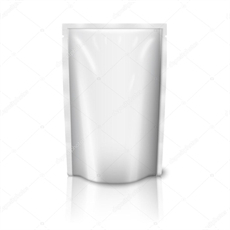The rise of biodegradable plastic bags is a response to growing concerns about the environmental impact of traditional plastic bags. Traditional plastic bags are made from non-biodegradable materials like polyethylene, which can persist in the environment for hundreds of years, contributing to pollution and harm to wildlife. In contrast, biodegradable plastic bags are designed to break down more quickly and harmlessly.
Here are some key points about the rise of biodegradable plastic bags:
- Environmental Concerns: Traditional plastic bags have been a significant source of environmental pollution. They are often found littering landscapes, clogging waterways, and posing a threat to wildlife. The slow decomposition of these bags has made them a focal point of environmental concern.
- Biodegradable Materials: Biodegradable plastic bags are typically made from materials that can break down naturally, such as starch-based polymers, polylactic acid (PLA), or other plant-based materials. These materials are derived from renewable resources and can decompose more rapidly in the environment.
- Reduced Carbon Footprint: The production of traditional plastic bags involves the use of fossil fuels and generates greenhouse gas emissions. Biodegradable plastic bags, which often use plant-based materials, can have a lower carbon footprint, making them a more environmentally friendly option in terms of production.
- Biodegradation Process: Biodegradable plastic bags can break down through microbial activity, sunlight, and other environmental factors. They typically decompose into natural substances like water, carbon dioxide, and biomass, leaving behind minimal or no harmful residues.
- Regulations and Standards: Many countries and regions have implemented regulations and standards to ensure that products labeled as “biodegradable” meet specific criteria. These criteria often include requirements for the rate and extent of biodegradation, as well as the absence of harmful residues.
- Consumer Demand: Increased awareness of environmental issues has led to a growing demand for biodegradable alternatives to traditional plastic bags. Consumers are often willing to pay a premium for products that they perceive as more environmentally friendly.
- Challenges: While biodegradable plastic bags offer environmental benefits, they also come with challenges. Some types of biodegradable plastics may require specific conditions to decompose, such as industrial composting facilities, and may not break down as expected in natural environments. Additionally, there is ongoing debate about the long-term environmental impact and sustainability of some biodegradable materials.
- Alternative Solutions: Biodegradable plastic bags are just one of many solutions to address plastic pollution. Other alternatives include reusable bags, paper bags, and reducing overall plastic consumption.
In conclusion, the rise of biodegradable plastic bags is a response to environmental concerns associated with traditional plastic bags. While they offer potential benefits, it’s essential to ensure that they are produced and disposed of responsibly to maximize their environmental advantages and minimize potential drawbacks. Additionally, a holistic approach to reducing plastic waste should include efforts to reduce plastic consumption and promote recycling and reuse.














